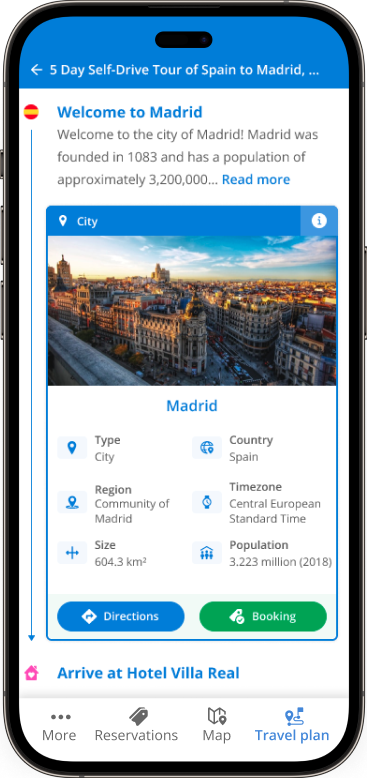
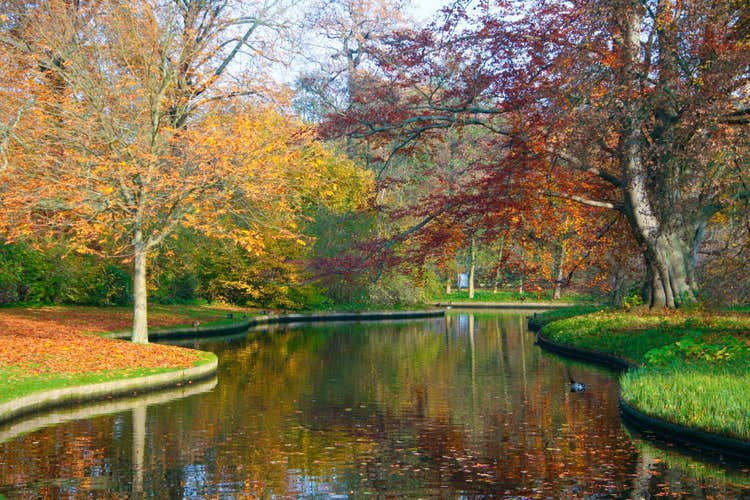
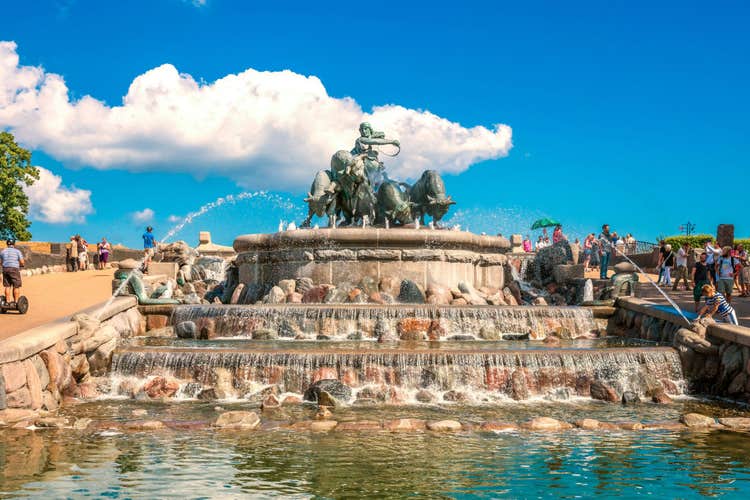


Denmark in September is full of quiet charm and seasonal surprises. You can watch thousands of starlings swirl across the sky during Sort Sol. Explore harvest-ready countryside and taste fresh local apples, or ride along coastal trails as the air turns crisp. Read on to discover what early fall looks like in this scenic Nordic destination.
The summer crowds have thinned, but the cities still feel lively, and the countryside begins to glow with autumn color. September offers a perfect balance of mild weather, lively festivals, and a laid-back vibe that makes every moment feel unhurried. It’s an inviting time to explore Denmark at your own pace.
As you plan your trip, you'll find plenty of travel packages in Denmark suited to both city stays and countryside getaways. Flights to Denmark remain frequent in September, with good access through Copenhagen, Aarhus, and Billund. Car rentals in Denmark are also widely available, offering a flexible way to explore at your own pace.
Ready to start planning? Keep reading to see what Denmark in September has to offer.
Weather in Denmark in September
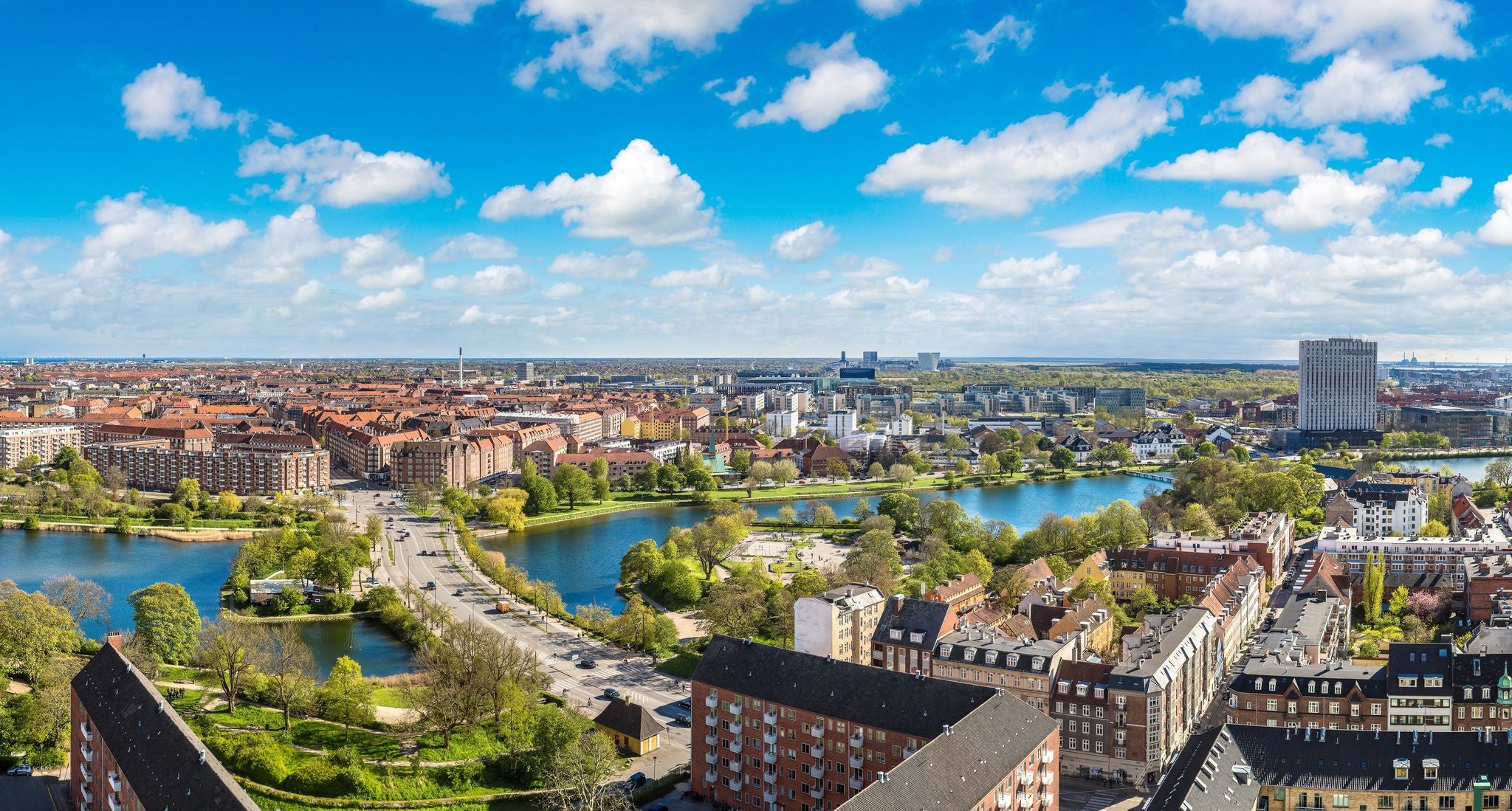
September marks the start of early autumn in Denmark. It’s often considered one of the best times to visit Denmark, thanks to its gentle weather shift, golden light, and fewer crowds.
While the country starts to cool after summer, the days remain mild enough for exploring cities, cycling through the countryside, or walking along the coast. The changing season also brings a cozier, quieter atmosphere that many travelers find especially appealing.
If you're curious about the September weather in Denmark, here's what to expect:
- Average daytime temperature: 55 F to 63 F (13 C to 17 C)
- Average nighttime temperature: 46 F to 52 F (8 C to 11 C)
- Rainfall: Expect 12 to 15 days of scattered, persistent rain
- Wind: Breezy days are common, especially along the coast and in western regions
- Humidity: Moderate (around 80%), layers and breathable fabrics are best
- UV index: Moderate (around 3 to 4), sun protection is still recommended on bright days
- Daylight hours: 13 hours at the start of the month, closer to 11 by the end
- Sea temperature: Around 59 F (15 C); chilly but still swimmable for some
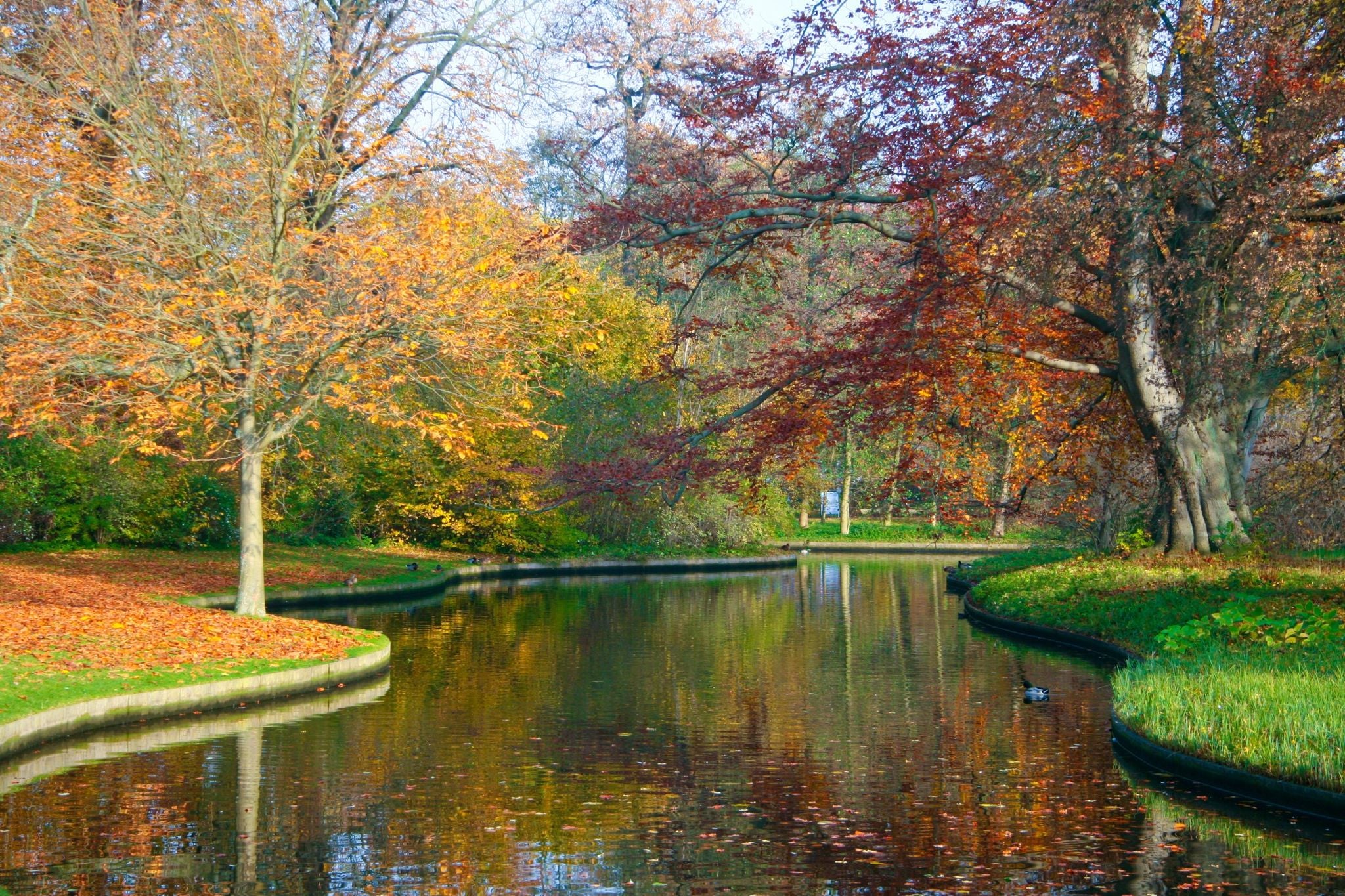
Here's a breakdown of how the Danish weather in early, mid, and late September usually feels:
- Weather in Denmark in early September: Still pleasantly warm, especially in the south. Many days reach the low 60s F (16 C to 17C) with decent sunshine
- Weather in Denmark in mid-September: Temperatures begin to cool slightly; layers become essential, and light jackets are common
- Weather in Denmark in late September: Noticeably cooler with more cloud cover and a slight uptick in wind. Expect highs around 55 F (13 C) and chillier evenings
Overall, the Denmark September temperature is mild enough for outdoor exploration, yet cool enough to start experiencing the cozy side of Danish culture.
Note: For more weather information, check out the Danish Meteorological Institute’s official website.
Crowds and Costs in Denmark in September

September brings a noticeable shift in pace across Denmark. The high summer crowds taper off, yet most attractions, restaurants, and experiences remain open and welcoming. It’s a quieter, more comfortable time to explore. In top destinations in Denmark like Copenhagen and Aarhus, the lively energy remains, but the lines are shorter and the streets are less busy.
Travel costs also begin to ease. Prices for accommodations in Denmark are generally lower than in July and August, particularly from mid-September onward. Still, it’s a good idea to book accommodations in advance, especially if your trip overlaps with festivals.
For travelers on a tighter budget, hostels and guesthouses in Denmark offer more affordable and character-filled lodging options throughout the country.

Tours, cultural experiences, and excursions continue to run steadily. And while last-minute tickets are easier to come by than during peak season, it’s still smart to book tours and tickets in Denmark in advance. That’s especially true for popular museums, guided day trips, or canal sightseeing cruises.
Public transportation remains efficient and rarely overcrowded in September. However, if you're hoping to visit smaller towns or scenic countryside routes, renting a small car in Denmark offers excellent flexibility.
Booking transfers and transportation in Denmark early is also recommended if you’re traveling via airports or ferries, or want to ensure a seamless arrival experience.
Festivals and Events in Denmark in September
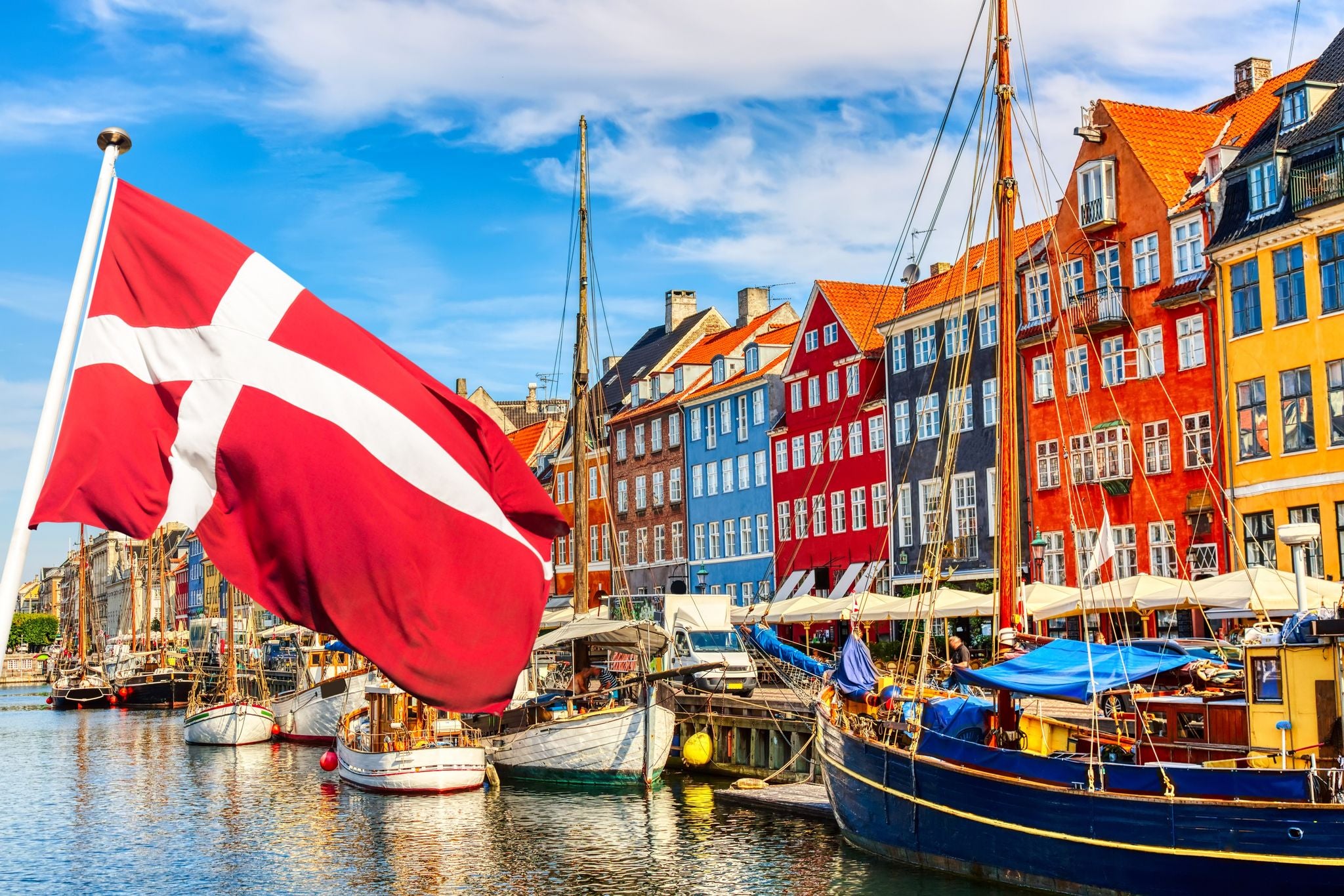
There’s a full lineup of exciting events in Denmark in September, from large-scale cultural festivals to local food celebrations and outdoor gatherings. While the first half of the month tends to be the busiest, travelers can still find unique experiences across the country throughout the month.
Aarhus Festival

Aarhus Festival is one of Denmark’s largest and most dynamic cultural events, held from the last week of August to early September. It transforms the city into a creative playground with music, theater, street performances, light installations, talks, and culinary pop-ups. Many events are free and open-air, making it easy to join in as you move through the city.
It’s one of the most exciting times to visit Aarhus, but also one of the busiest. The festival draws large crowds, especially around popular venues and weekend evenings. So expect a lively, energetic atmosphere throughout the city.
To stay close to the action, it’s a good idea to plan ahead. Accommodations tend to book up quickly, especially in the city center. For convenience, check out the best places to stay in Aarhus near the Latin Quarter, Frederiksbjerg Restaurant, and along the harborfront.
Golden Days Festival
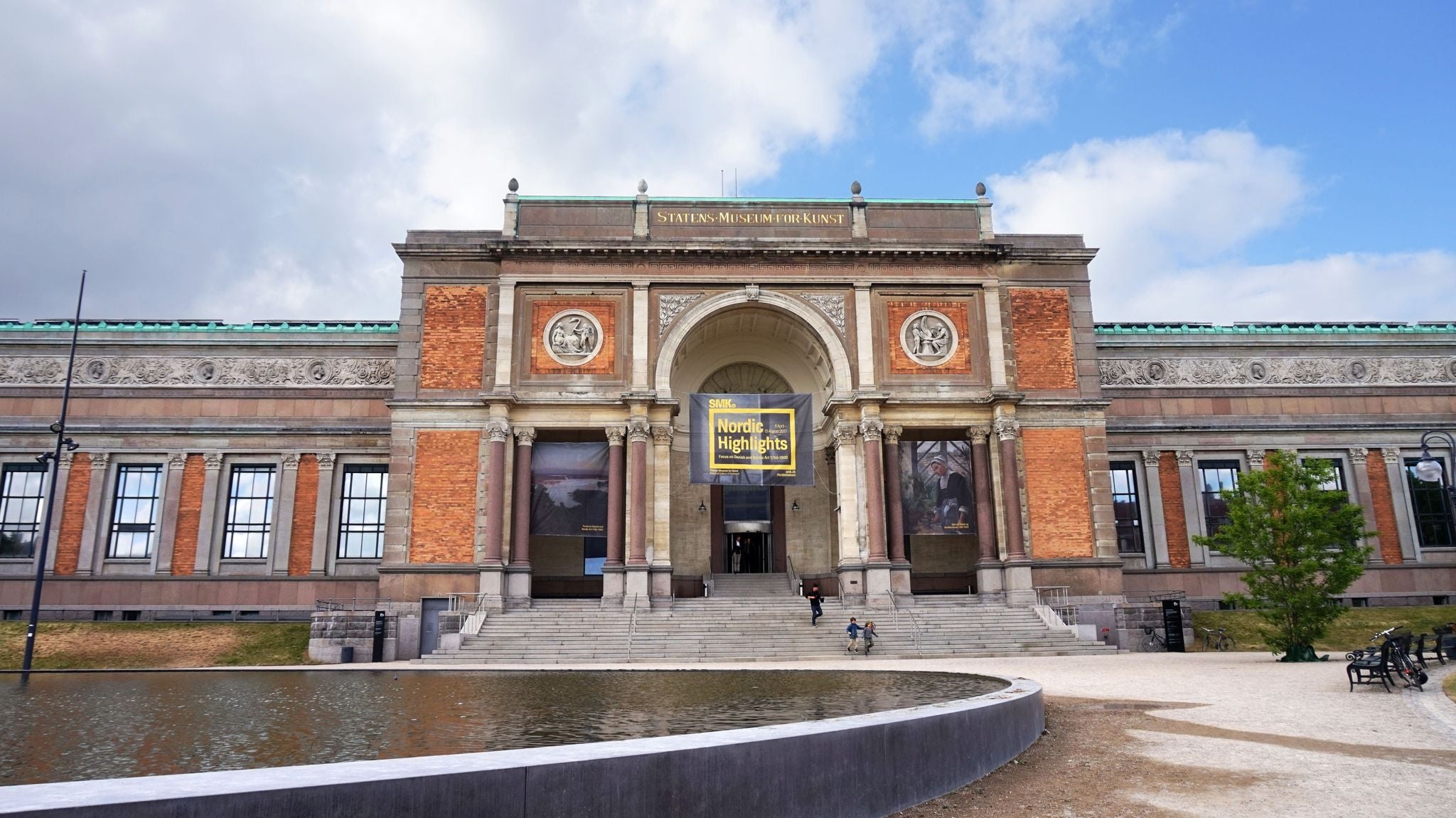
Copenhagen takes a thoughtful turn each September during the Golden Days Festival, a city-wide celebration of history, culture, and big ideas.
Unlike other festivals focused on music or food, this one dives into a single theme each year. The festival brings it to life through exhibitions, debates, performances, and walking tours in Copenhagen. You might find a talk on ancient myths at a museum one day and a pop-up theatrical piece in a public square the next.
The beauty of this festival is its accessibility. You don’t need a full itinerary or even a deep understanding of Danish history to take part. Many events are free, and most are designed to encourage curiosity, reflection, and dialogue. It’s indeed perfect for travelers who enjoy deeper cultural experiences in Copenhagen without the need to plan every hour.
If you’re staying in the city during Golden Days, location matters less than in other festivals since events are scattered across different neighborhoods. Still, it’s worth checking out the best places to stay in Copenhagen. Indre By, Vesterbro, and Norrebro all make excellent bases, with quick access to venues, good public transport, and plenty of restaurants nearby.
Aarhus Food Festival
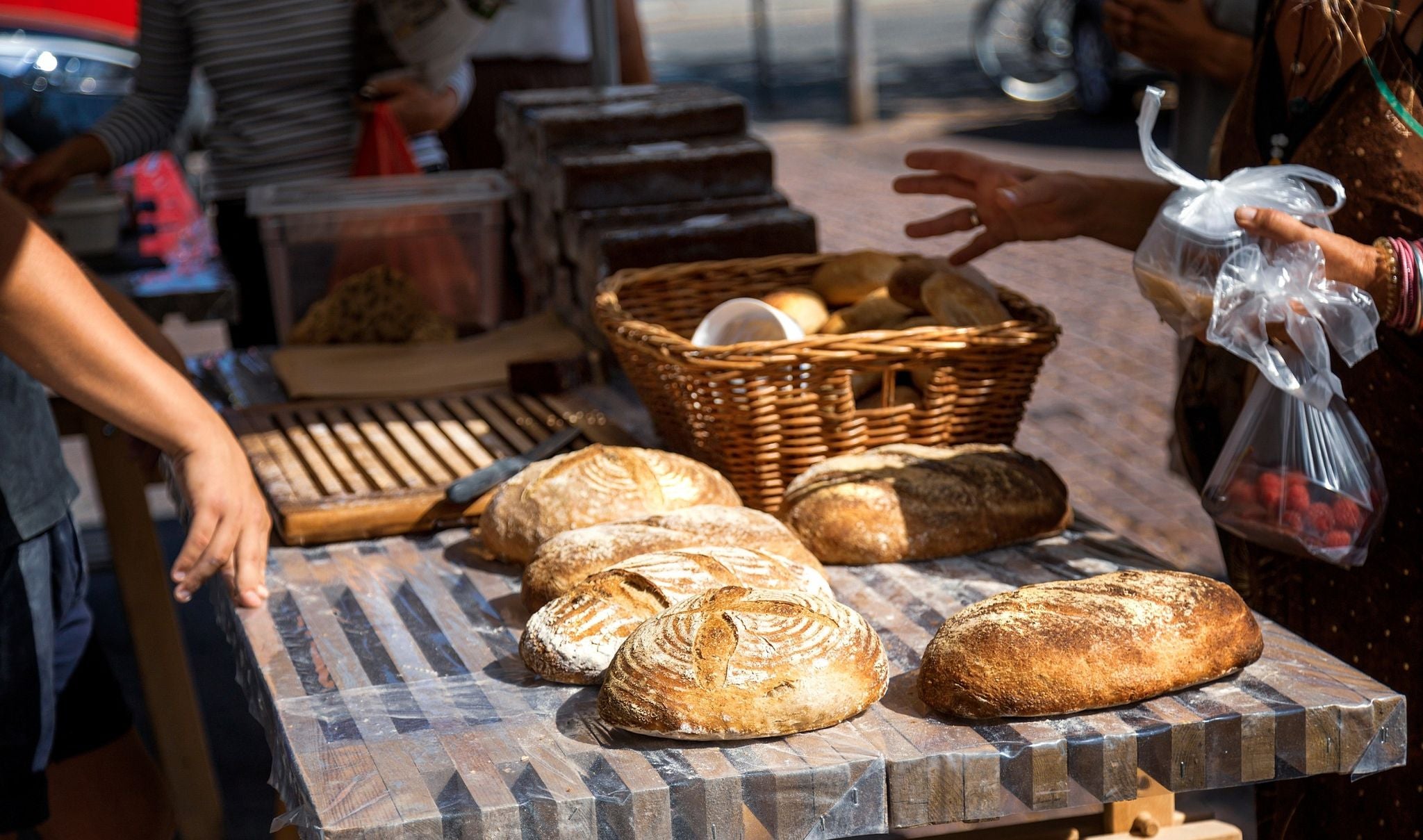
Each September, Aarhus turns into a tasting ground for some of Denmark’s most exciting culinary ideas. Aarhus Food Festival is a relaxed, open-air gathering that brings together chefs, farmers, foragers, and food lovers.
It celebrates Danish ingredients and Nordic food through sourdough workshops, coastal seafood tastings, street food pop-ups, sustainable cooking demos, and more.
The atmosphere is easygoing and welcoming. You can wander the harborfront at your own pace, try what looks interesting, and chat with local producers along the way. It’s a flavorful introduction to food and drink experiences in Denmark, especially for travelers curious about modern Nordic cuisine or regional specialties.
Romo Kite Festival

In Denmark in September, the wide sands of Lakolk Beach on Romo Island become a canvas for thousands of colorful kites. The Romo Kite Festival is one of the largest of its kind in Northern Europe, drawing kite flyers and spectators from all over the continent.
From giant animals and intricate 3D designs to team displays that fill the sky with synchronized patterns, the visual impact is unforgettable.
You don’t need to be a kite enthusiast to enjoy it. The atmosphere is relaxed and family-friendly, and there’s plenty of space to simply sit back and watch the sky shift and ripple with color. If you’re traveling with kids or enjoy low-key outdoor experiences, this is an ideal day trip or weekend outing.
Romo is connected to the mainland by a causeway, so it’s easy to reach without a ferry. For comfort and flexibility, renting a medium car in Denmark is a great option, especially if you're planning to explore the Wadden Sea region or combine the visit with nearby towns.
Copenhagen Half Marathon
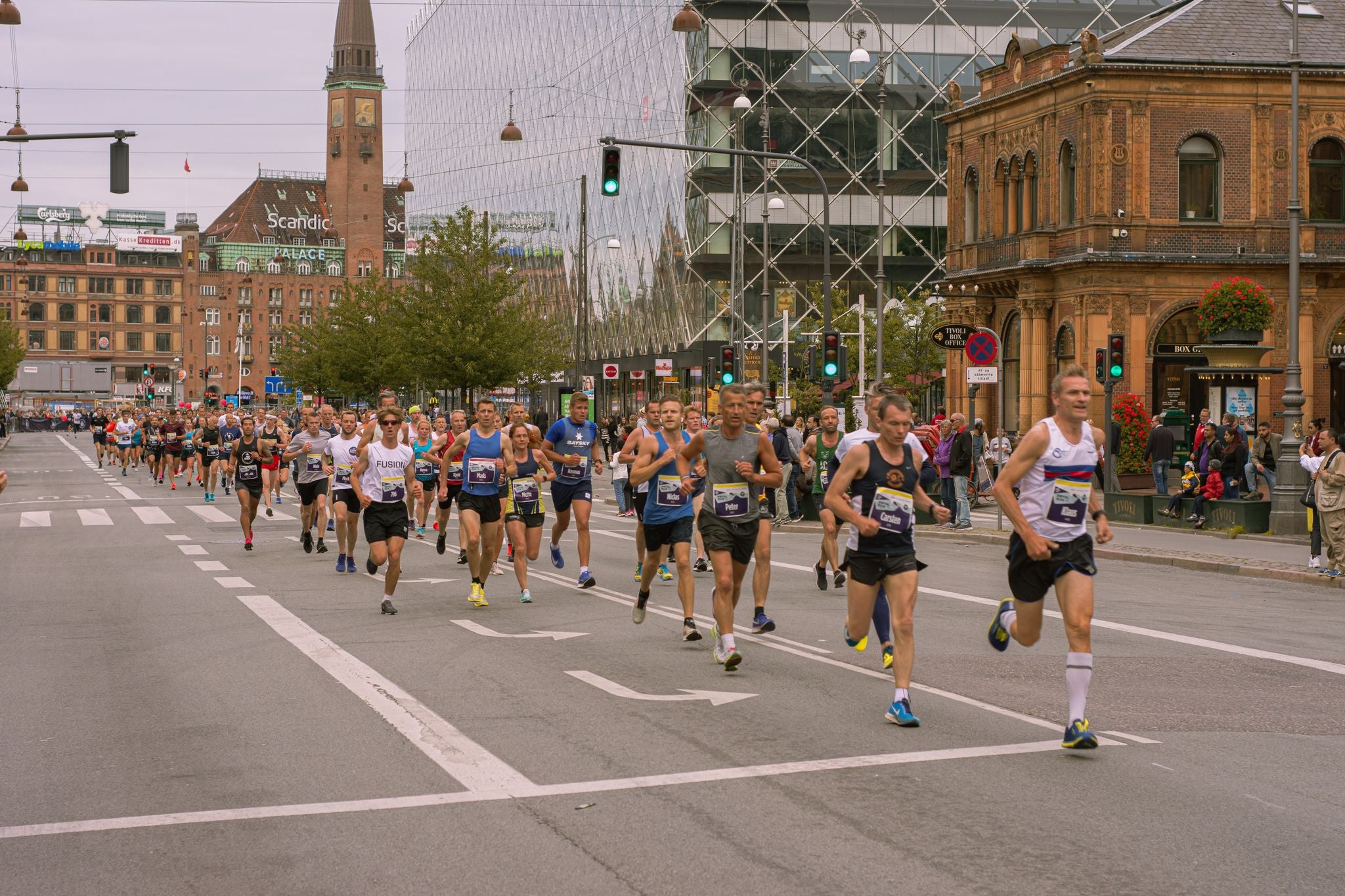
Every September, thousands of runners fill the streets of the Danish capital for the Copenhagen Half Marathon, one of Europe’s most well-regarded races. The race features a fast, flat course through Osterbro, Norrebro, Frederiksberg, and the historic Old Town.
The event draws both seasoned runners and first-time participants, but even non-runners can enjoy the festive atmosphere. Locals line the route with music and cheers, and cafes along the course tend to stay busy all day.
If you're in the city during race weekend, expect a lively scene. And plan around road closures, especially near the start and finish zones.
For travelers, it’s worth looking into travel packages in Copenhagen, many of which include accommodation, guided tours, and public transport passes. Whether you’re racing or just cheering someone on, it’s a great way to see more of the city before or after the event without having to plan every detail yourself.
WATERZ Festival

WATERZ Festival brings life to Hvide Sande each September, when Denmark’s west coast becomes the center of water sports culture. Set between the North Sea and Ringkobing Fjord, this laid-back harbor town hosts a full week of paddleboarding, kitesurfing, windsurfing, and kayaking.
Spectators can lounge on the beach or join a casual workshop, while kids can take part in beginner sessions or explore festival zones designed just for families. If you're looking for family tours in Denmark, this is the kind of event that keeps everyone engaged without needing a packed itinerary.
Best Places To Visit in Denmark in September
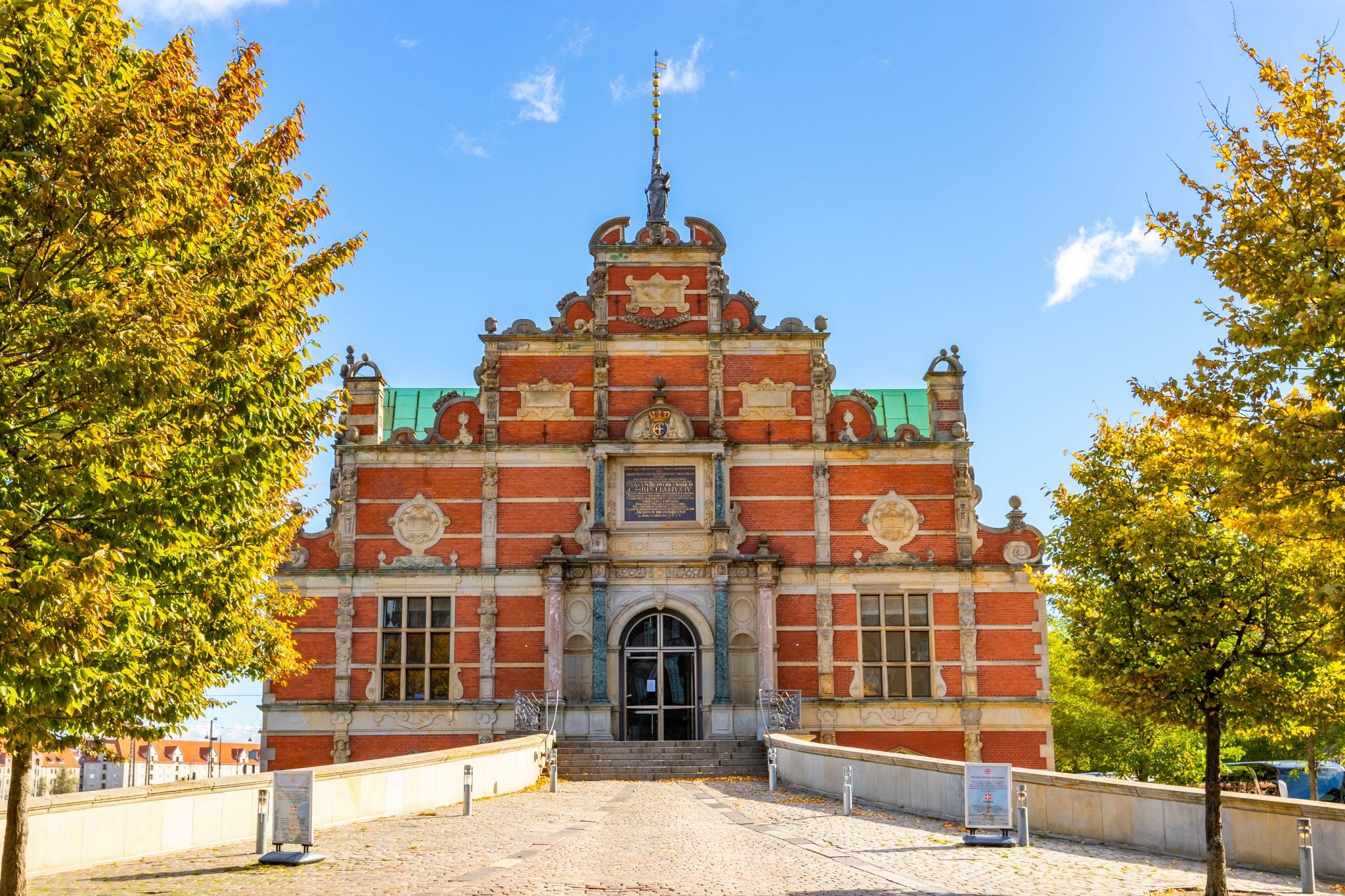
From historic cities to peaceful islands, September is a fantastic time to explore some of the most rewarding destinations in Denmark. The summer crowds have thinned, but the weather still favors sightseeing, making it easier to enjoy the country’s coastlines, cultural hubs, and scenic countryside at a more relaxed pace.
Copenhagen in September
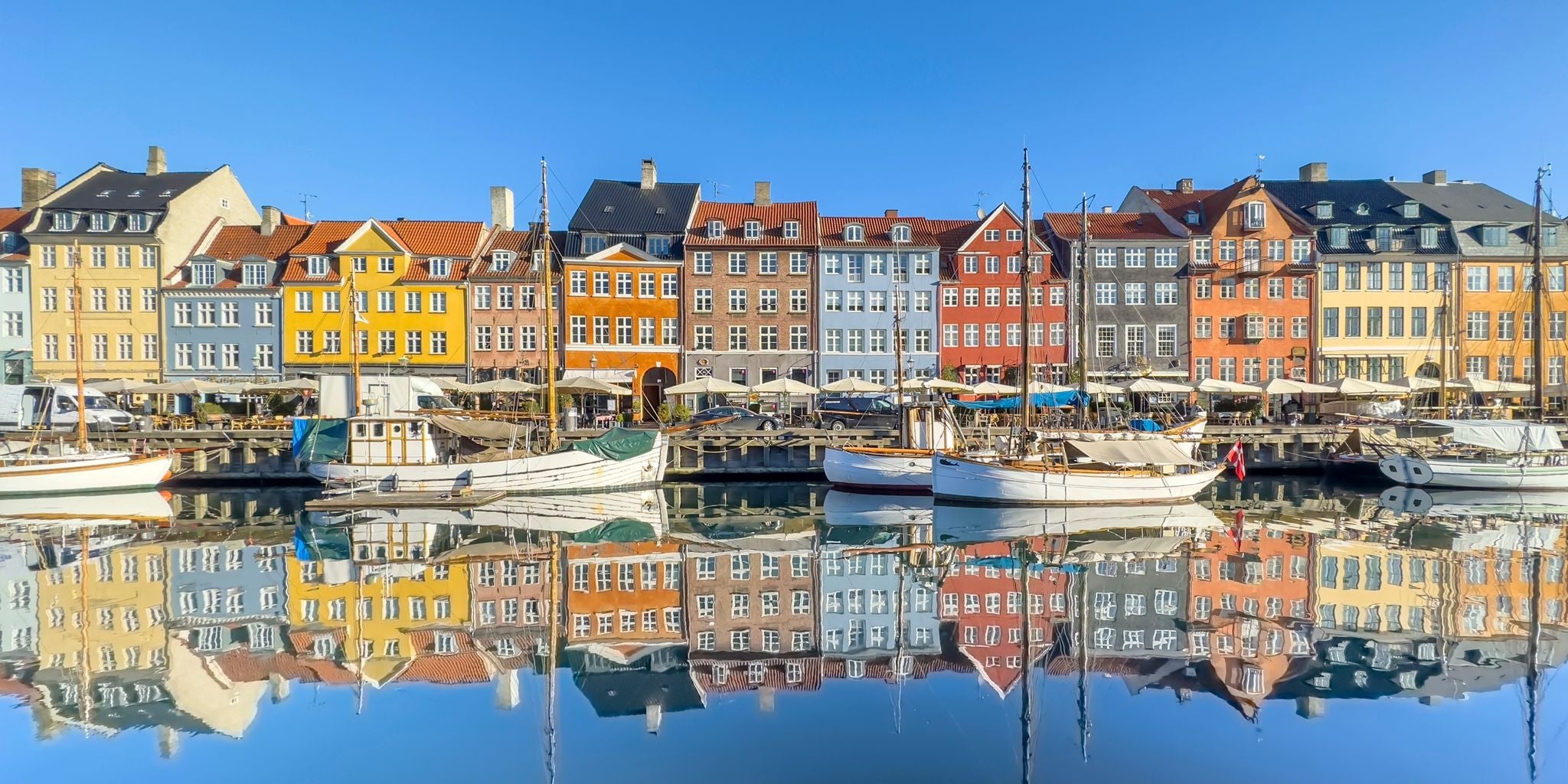
Copenhagen feels just right in September. The summer crowds have eased, but the city's cafes, canals, and cultural attractions are still full of life. It’s often considered the best time to visit Copenhagen if you want mild weather, lighter foot traffic, and a more local rhythm.
You can enjoy top landmarks like Nyhavn, Rosenborg Castle, and the Tivoli Gardens without long waits or heavy queues. The city’s green spaces, like the King’s Garden and Frederiksberg Park, are still lush and inviting, perfect for a slow afternoon stroll.
To explore the city, consider the best itineraries in Copenhagen. Many of these include boat tours, food hall visits, and museum stops, all of which are comfortably enjoyable this time of year.
You can also join a politically incorrect Copenhagen highlights walking tour for a fun and relaxed introduction to the city's history and architecture. Or hop on a guided Copenhagen canal cruise to see the capital from the water while learning about its past and present.
Aarhus in September
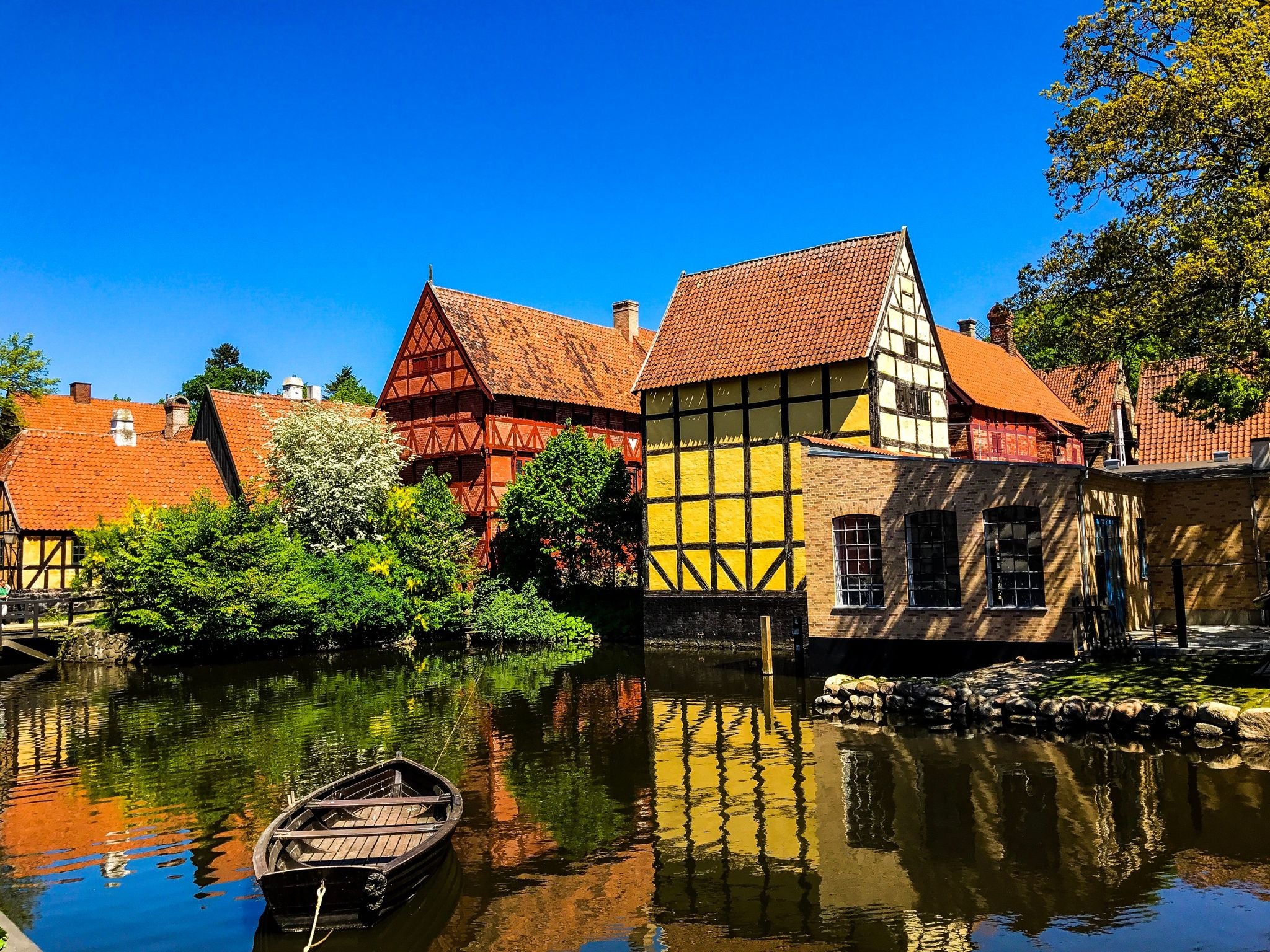
Denmark’s second-largest city hits its stride in September. Aarhus combines a youthful energy with a strong cultural backbone, especially during festival season. With students back in town, museum exhibitions in full swing, and cozy cafes starting to prepare for autumn, the city feels alive yet unhurried.
September is also a great time to explore Aarhus on foot. The cooler weather makes walking between neighborhoods a pleasure, and there are plenty of tours and tickets in Aarhus that help you dig deeper into the city’s character.
You can book a historical walking tour in Aarhus to explore the old Latin Quarter and hear stories about Viking roots and royal landmarks. For something more contemporary, a street art and rooftops tour in Aarhus blends modern murals with views over the city skyline.
Odense in September
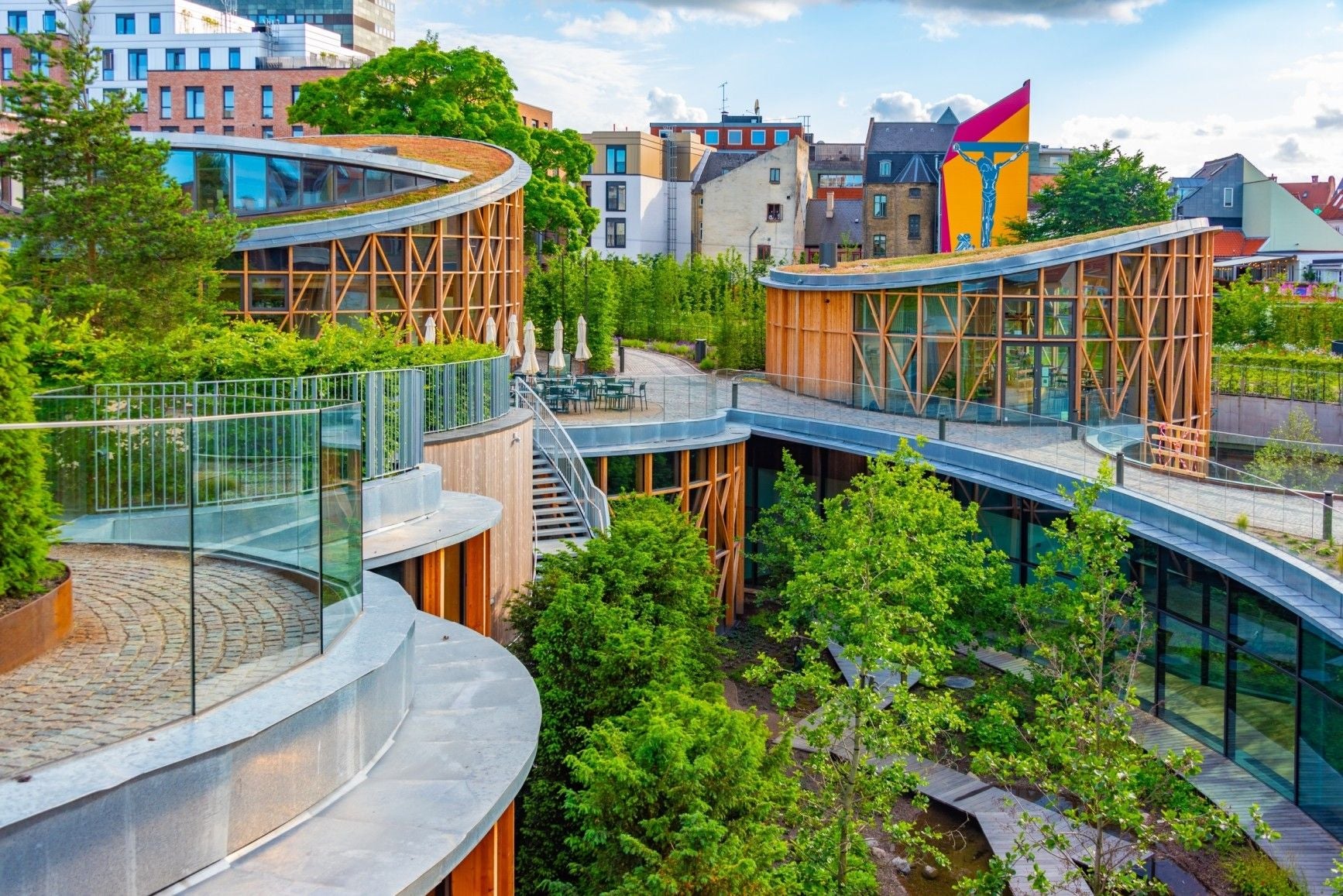
Odense feels especially charming in early fall. The birthplace of Hans Christian Andersen has a cozy, walkable old town that glows with warm light in September. And the pace is slower than in Copenhagen or Aarhus, ideal for travelers looking to enjoy a cultural city without the crowds.
It’s a good time to explore on your own or choose from the largest selection of travel packages in Odense. These packages include museum entries, bike rentals, and local attractions.
For a deeper connection to the city’s history and stories, you can book a private walking tour in Odense. Learn about its medieval roots, literary heritage, and architectural gems at your own pace. Whether you’re there for the storytelling or the slower rhythm, Odense in September is a pleasant counterpoint to Denmark’s bigger cities.
Ribe in September

Ribe is one of those places where time feels a little slower, and in September, that’s part of the charm. Denmark’s oldest town settles into a quieter rhythm after summer, with cobbled streets, half-timbered houses, and open skies that suit the early autumn light.
It’s a great month for exploring the town’s history without the crowds. The cathedral square stays peaceful, and walking tours in Denmark feel more personal. You’ll likely have space to take in the view from the Ribe Cathedral tower or spend time at the Viking Center without feeling rushed.
For the best experience, browse the travel packages in Ribe. These often include local guides, admission to the museums, and sometimes even transfers to nearby spots like the Wadden Sea.
If you’re lucky with timing, you might catch the “Sort Sol” (black sun) murmuration nearby. It’s a stunning natural event as flocks of starlings fill the sky at dusk. September’s calm makes it all feel even more cinematic.
Aalborg in September
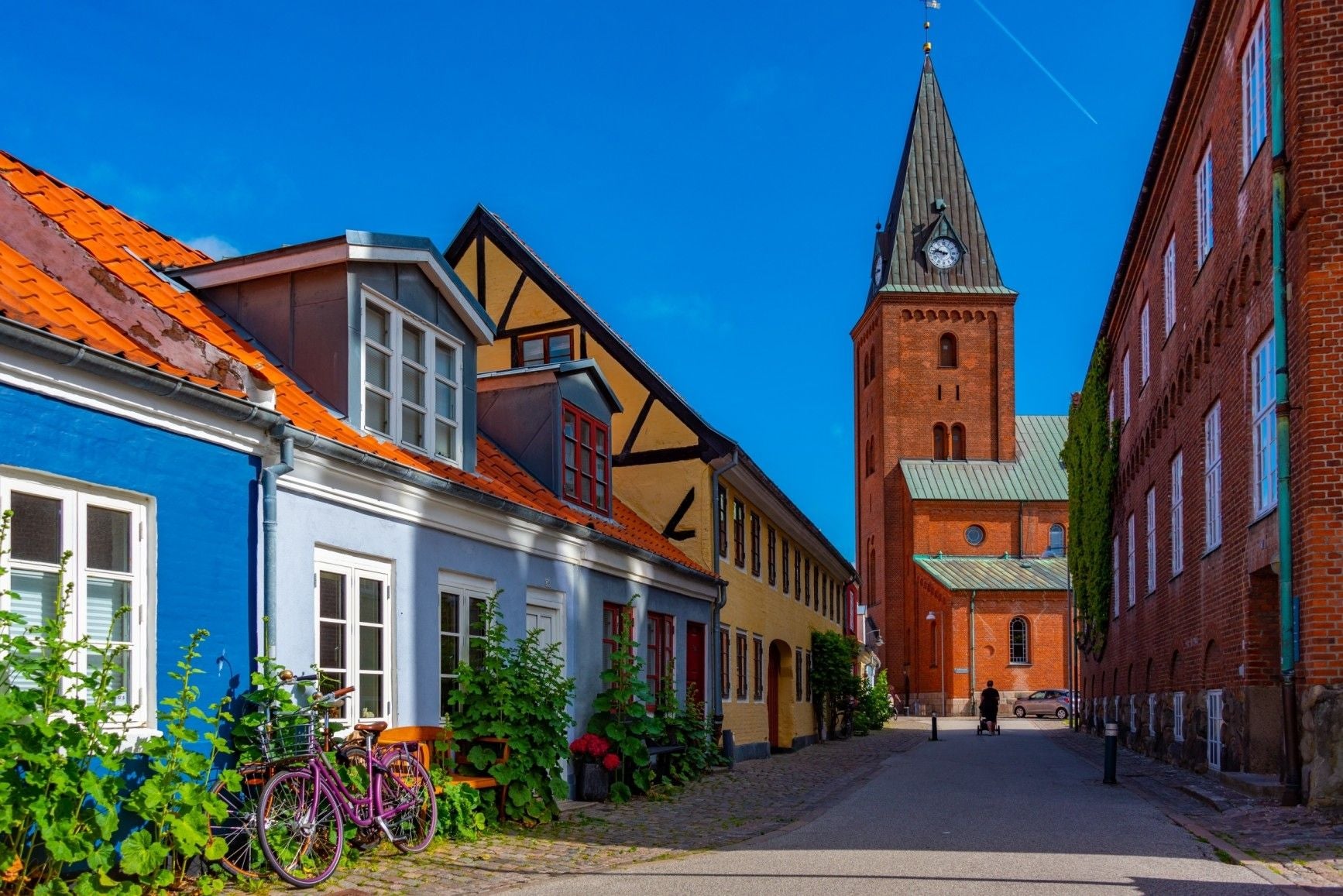
Aalborg tends to fly under the radar, but September is a great time to discover why it’s one of Denmark’s most interesting cities. The weather’s still good for walking, and the mix of old-world charm and creative energy feels especially balanced this time of year.
You can explore its Viking roots and well-preserved historic streets on an Aalborg historical treasures walking tour. Or get a completely different perspective through the city’s 3-hour Aalborg street art tour. The city has quietly built up one of Denmark’s most vibrant street art scenes, something many first-time visitors don’t expect.
Some travel packages in Aalborg bundle these kinds of experiences with museum entries, fjord views, or hotel stays near the waterfront. It’s a smaller city with a lot of personality, and September’s steady pace gives you the space to enjoy it without distraction.
Skagen in September

Skagen, at Denmark’s northern tip, feels like it’s built for September. The summer tourists are mostly gone, but the light, famously soft and gold, is still beautiful. The town slows down just enough to let you enjoy its beaches, galleries, and seafront cafes without a crowd in sight.
You can walk out to Grenen, where two seas meet, and often have the shoreline nearly to yourself. The Skagen Museum is quieter too, giving you more space to take in the works of the artists who made this place famous. Even a short bike ride through the dunes or along the harbor feels like a proper escape.
There aren’t many big events this time of year, and that’s part of the appeal. September in Skagen is more about quiet walks, fresh seafood, and those long, painterly skies that linger just a little longer before autumn fully arrives.
Bornholm in September
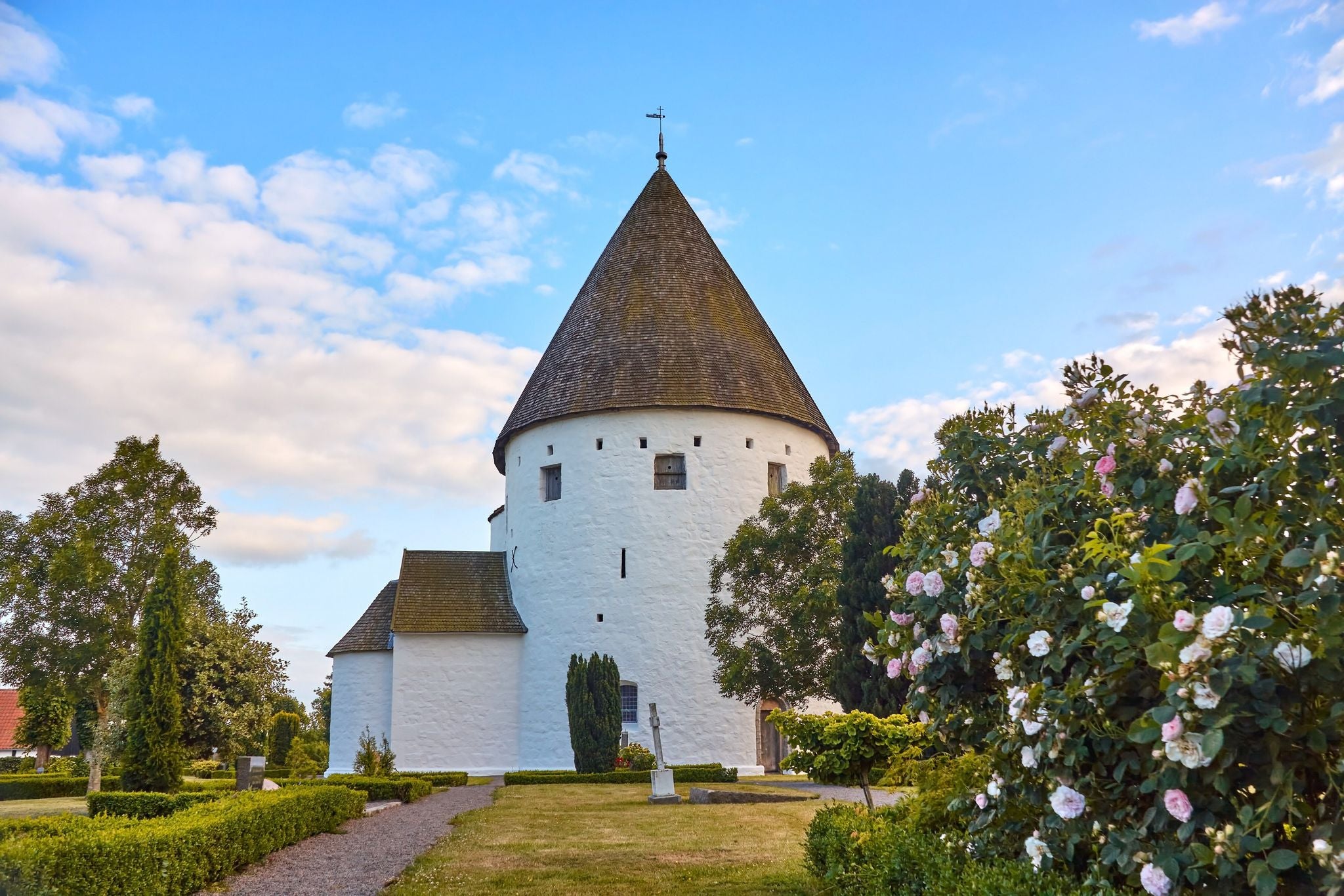
Bornholm in September is peaceful, uncrowded, and still full of color. The summer rush is over, but the island’s small towns, forest trails, and rocky coastlines remain open and welcoming. It’s the kind of place where you can slow down properly, whether you’re exploring on foot, by bike, or just by following whichever coastal road looks nicest.
This is a great time to try local food, too. Smokehouses are still serving warm fish plates, and farmers' markets offer early fall produce like apples and late-summer berries. If you're looking for structure, there are tours and tickets in Bornholm that cover everything from historic ruins and round churches to hiking routes and culinary tastings.
The light is softer, the pace is slower, and everything feels just a little easier. September might be the best time to see what locals love about the island, just before the winds change and winter sets in.
Top Things To Do in Denmark in September
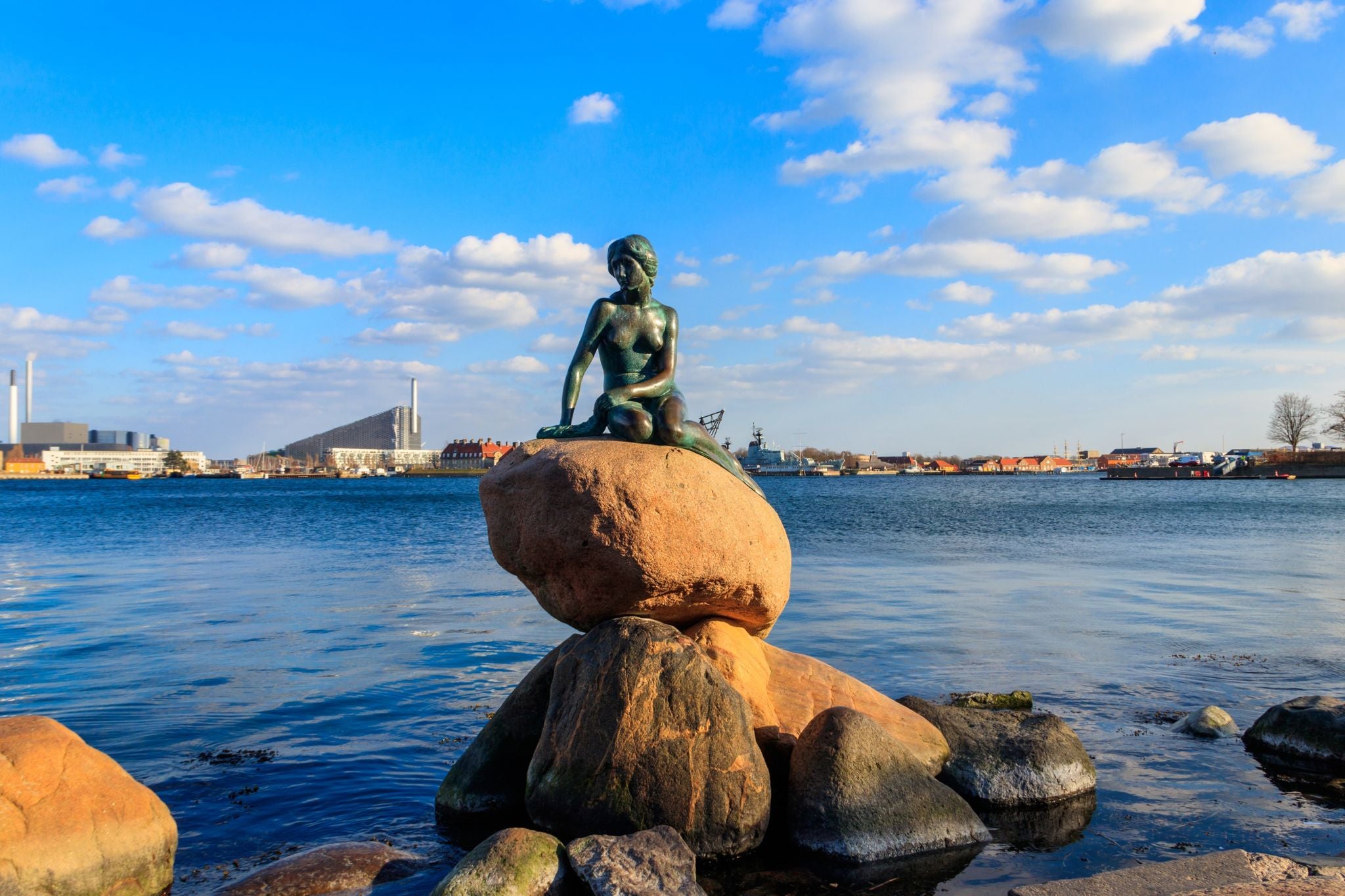
September offers a perfect mix of good weather and fewer crowds, making it one of the best months to enjoy outdoor and cultural activities in Denmark. Whether you're into coastlines, countryside, or city life, there's plenty to do without the summer rush.
Enjoy Classic Rides at Tivoli Gardens in September
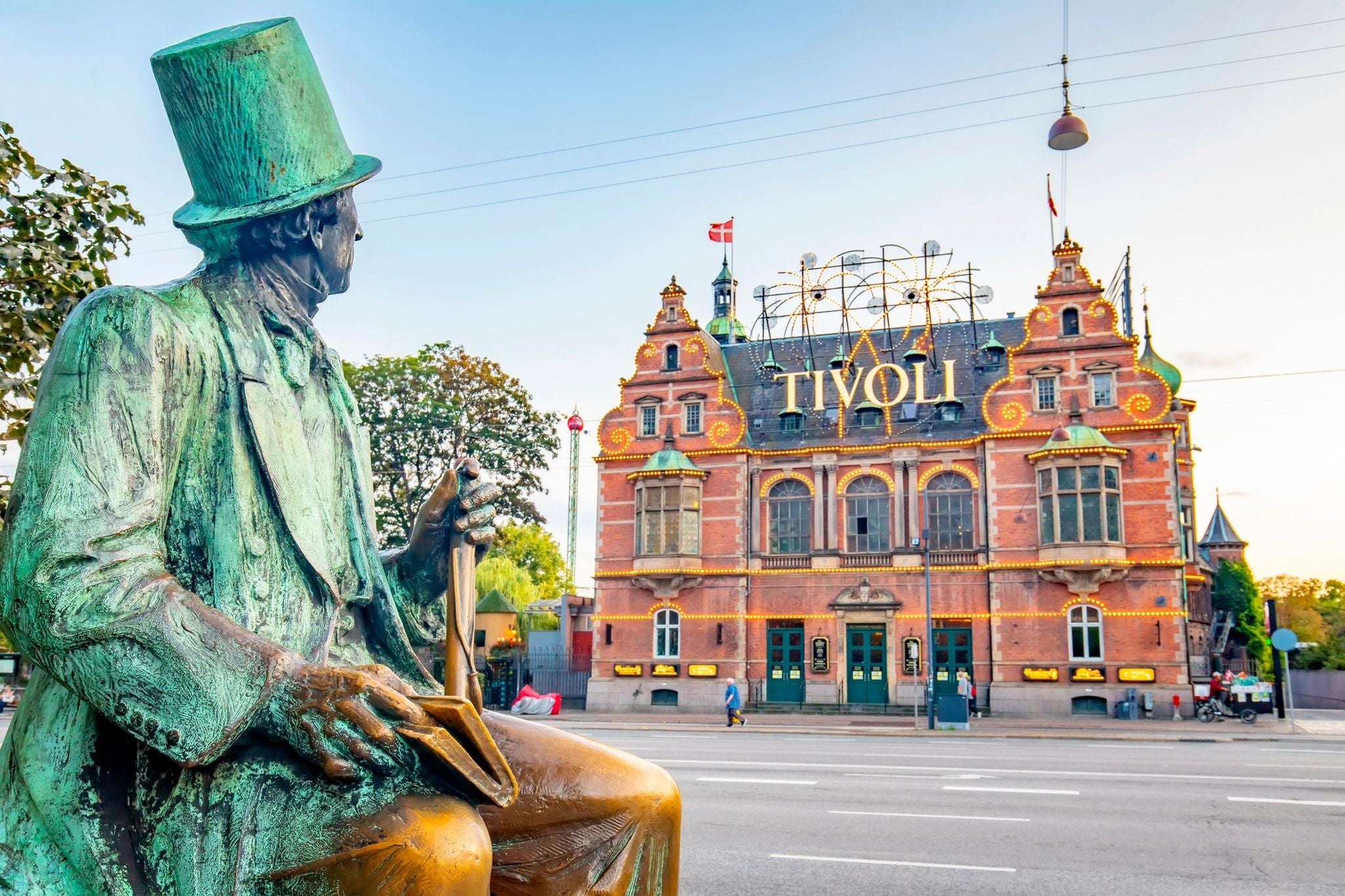
Visiting Tivoli Gardens is one of the top things to do in Copenhagen in September. This historic amusement park blends nostalgic charm with just the right amount of seasonal atmosphere. The summer crowds are mostly gone, but the lights still twinkle, the music plays, and the gardens hold on to the last of their color.
Inside, you’ll find more than just rides. There are lakeside paths to wander, flowerbeds still in bloom, and open-air stages where you might catch a concert or ballet. It’s just as easy to stop for a quiet coffee by the fountains as it is to hop onto one of the park’s old wooden roller coasters.
If you’re visiting on your own, get a Tivoli Gardens entry ticket with unlimited rides to enjoy everything without the hassle of buying tickets inside. The Copenhagen Card also includes entry, making it a good option if you're planning to visit several attractions during your stay.
You could also join a 3-hour bike tour in Copenhagen, which includes a ride past Tivoli Gardens and other highlights. It's a great way to get your bearings and return to the park later when you’re ready to explore it fully.
Cycle Through Denmark’s Scenic Routes in September
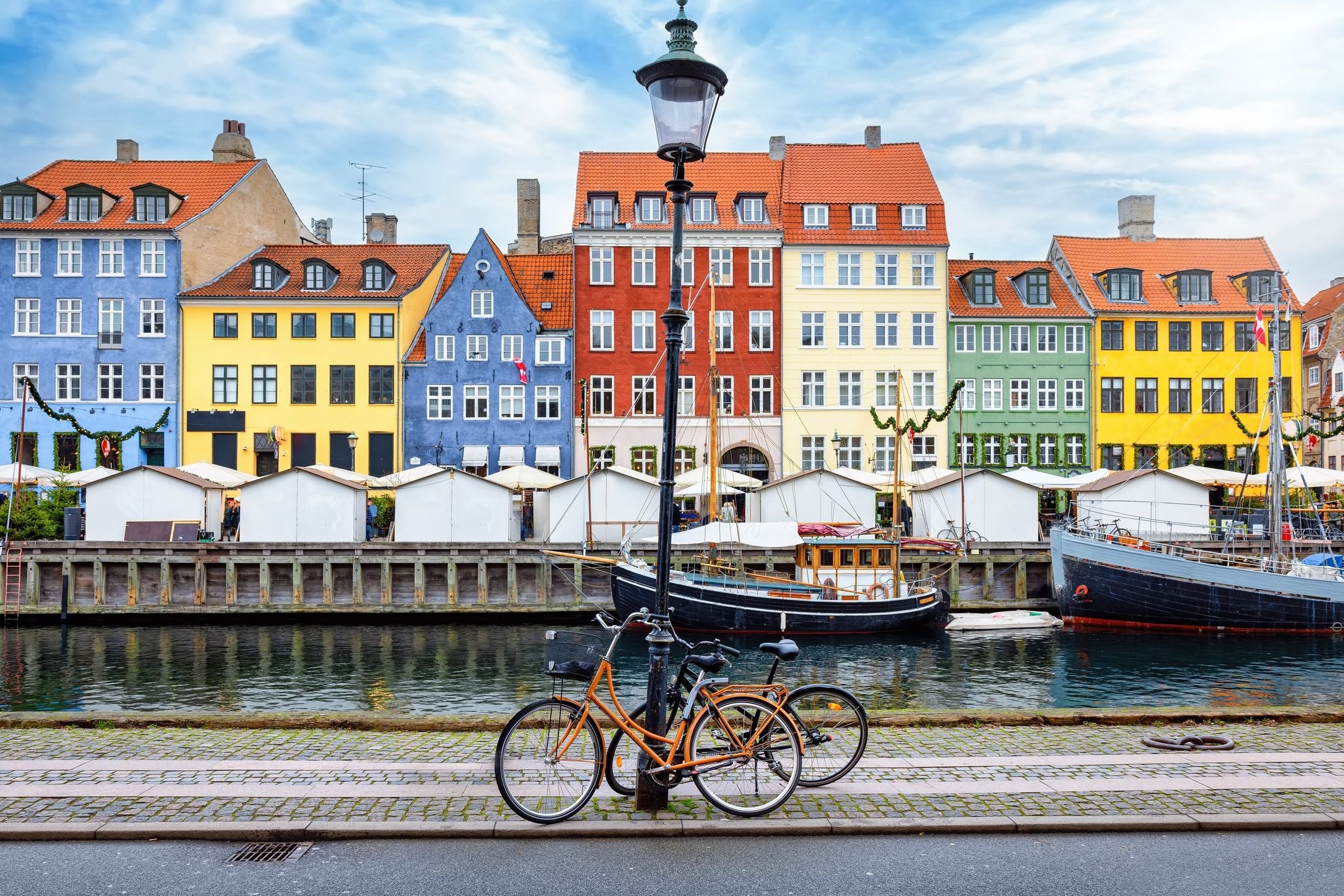
Cycling in Denmark is one of the most rewarding ways to take in the scenery. September is an ideal time for it, with mild temperatures, crisp air, and just enough color creeping into the landscape to make every ride feel special. From coastal paths to inland lake trails, the country is built for two wheels.
Here are some of the best scenic cycling routes to explore in Denmark in September:
- The Baltic Sea Cycle Route: A coastal trail looping around southern Denmark, passing beaches, fishing towns, and quiet countryside roads.
- The North Sea Cycle Route: This dramatic west coast ride follows the shoreline of Jutland, with views of sand dunes, lighthouses, and open sea.
- The Silkeborg–Skanderborg Route: A peaceful inland route through lakes and forests in central Jutland, perfect for slower-paced cycling days.
If you're in Copenhagen during early autumn, keep an eye out for the Copenhagen Tweed Ride. It’s a social cycling event where locals dress up in vintage clothing and ride through the city together. It’s a fun, quirky way to experience the city’s deep-rooted cycling culture.
To get started, consider joining a 3-hour Copenhagen highlights bike tour, which offers a guided overview of the capital’s must-sees. For a more relaxed ride, the guided e-bike tour in Copenhagen is a great option to explore at a comfortable pace without sacrificing range or insight.
Celebrate the Harvest Season in Rural Denmark in September
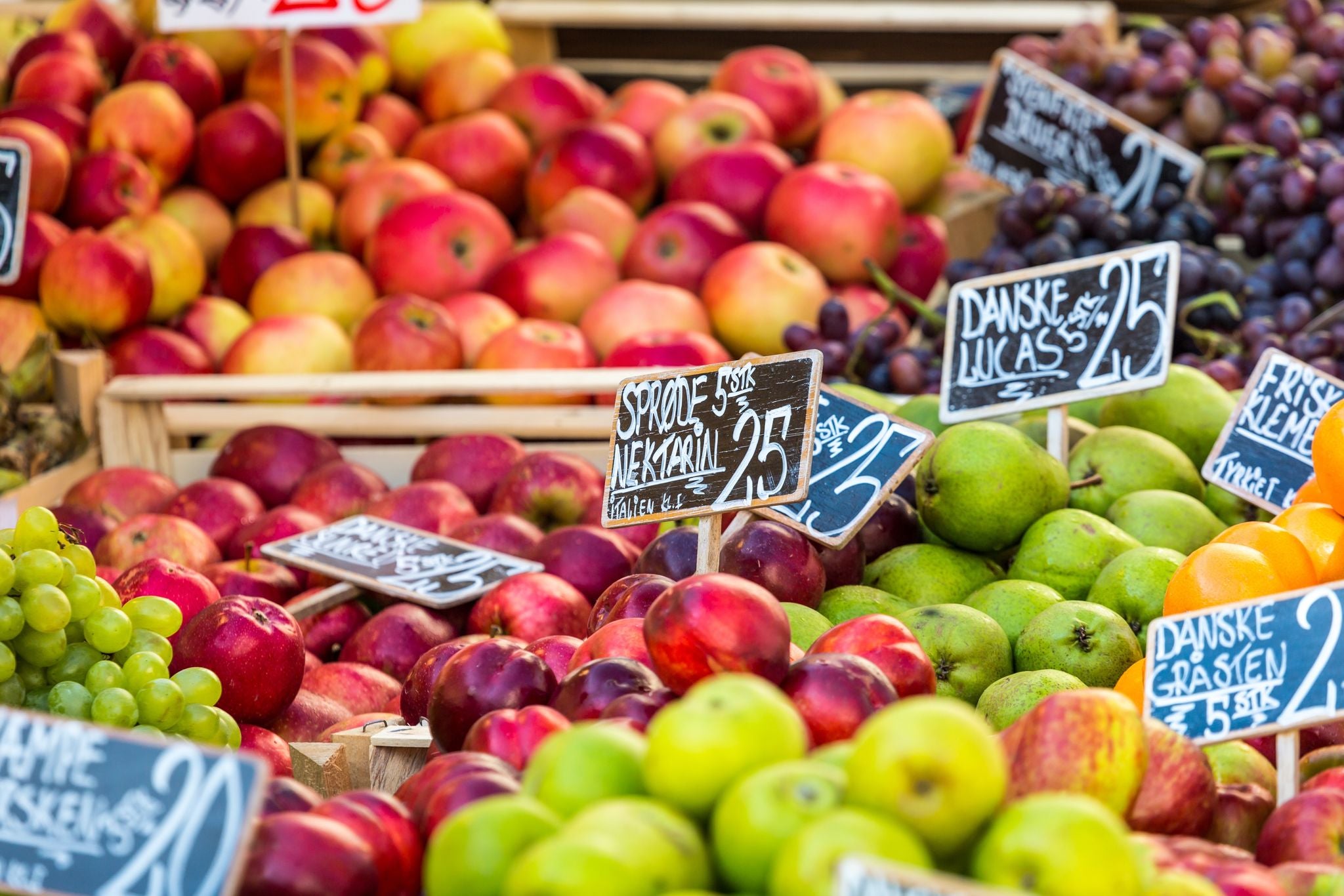
September is harvest time across rural Denmark, and the countryside feels full of life. Apple orchards, berry farms, and small family-run plantations open their gates for the season, offering everything from fresh produce to homemade jams, juices, and pastries. It’s a great month to slow down, breathe in the country air, and enjoy the quieter side of the season.
This is also a great moment to plan road trips in Denmark. The roads are scenic and uncrowded, and the smaller towns and villages are especially welcoming to visitors this time of year.
Renting a medium car in Denmark gives you the flexibility to explore at your own pace, whether you're stopping by a farm shop or just following a scenic backroad through open fields.
Fjordvang Fruit Plantation on North Fyn is one spot to keep in mind. It’s known for its old Danish apple varieties like Discovery, Filippa, and Aroma, all ripe and ready in early autumn. Many of these places are simple, authentic, and easy to visit if you give yourself the time to go off the main routes.
Try Water Sports Along Denmark’s Coast in September
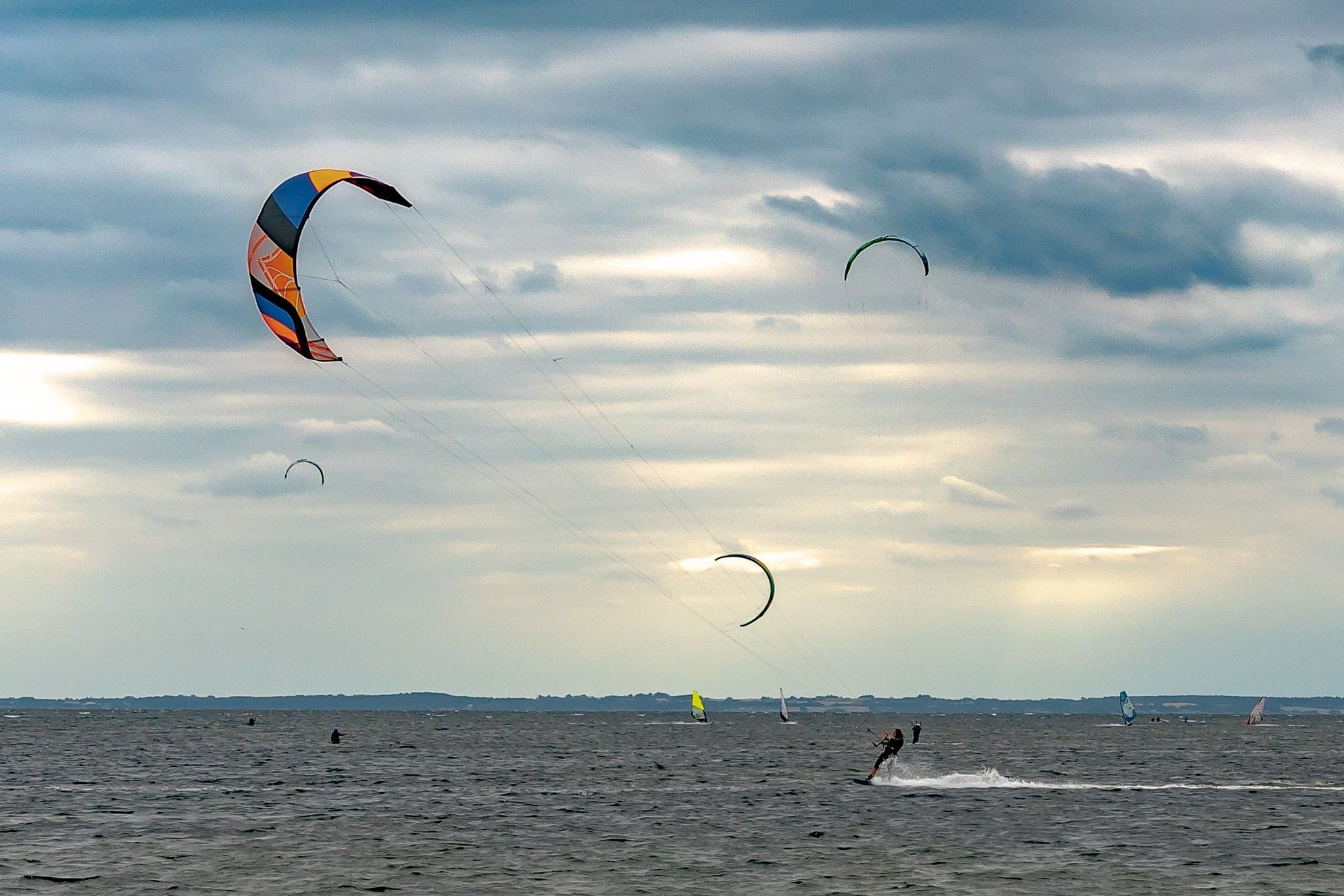
Denmark might not be the first place that comes to mind for outdoor adventure. But its long coastline, gentle wind conditions, and late-summer weather make September a great time to try a few water activities in Denmark.
The sea is still relatively mild, especially in the early part of the month, and many resorts in Denmark offer gear rentals and local guidance near the shore.
Popular water sports in Denmark in September include:
- Kitesurfing: Particularly good around Romo and the west coast, where steady winds make for exciting sessions.
- Surfing: Cold Hawaii in Klitmoller remains one of the most popular surf spots, especially as the autumn swells start to pick up.
- Kayaking: Great for calmer waters like fjords or around sheltered coastal towns, perfect for beginners or relaxed paddling.
- Canoeing: Popular along river routes inland, offering peaceful scenery and easy access to nature.
If you’re near central Jutland in early September, look out for the Tour de Gudena. It’s an annual canoe and kayak race that brings together locals and visitors for a lively weekend on Denmark’s longest river. Even if you’re not racing, it’s a fun event to watch and a great way to experience the water culture that still runs deep across the country.
Hike the Chalk Cliffs of Mons Klint in September
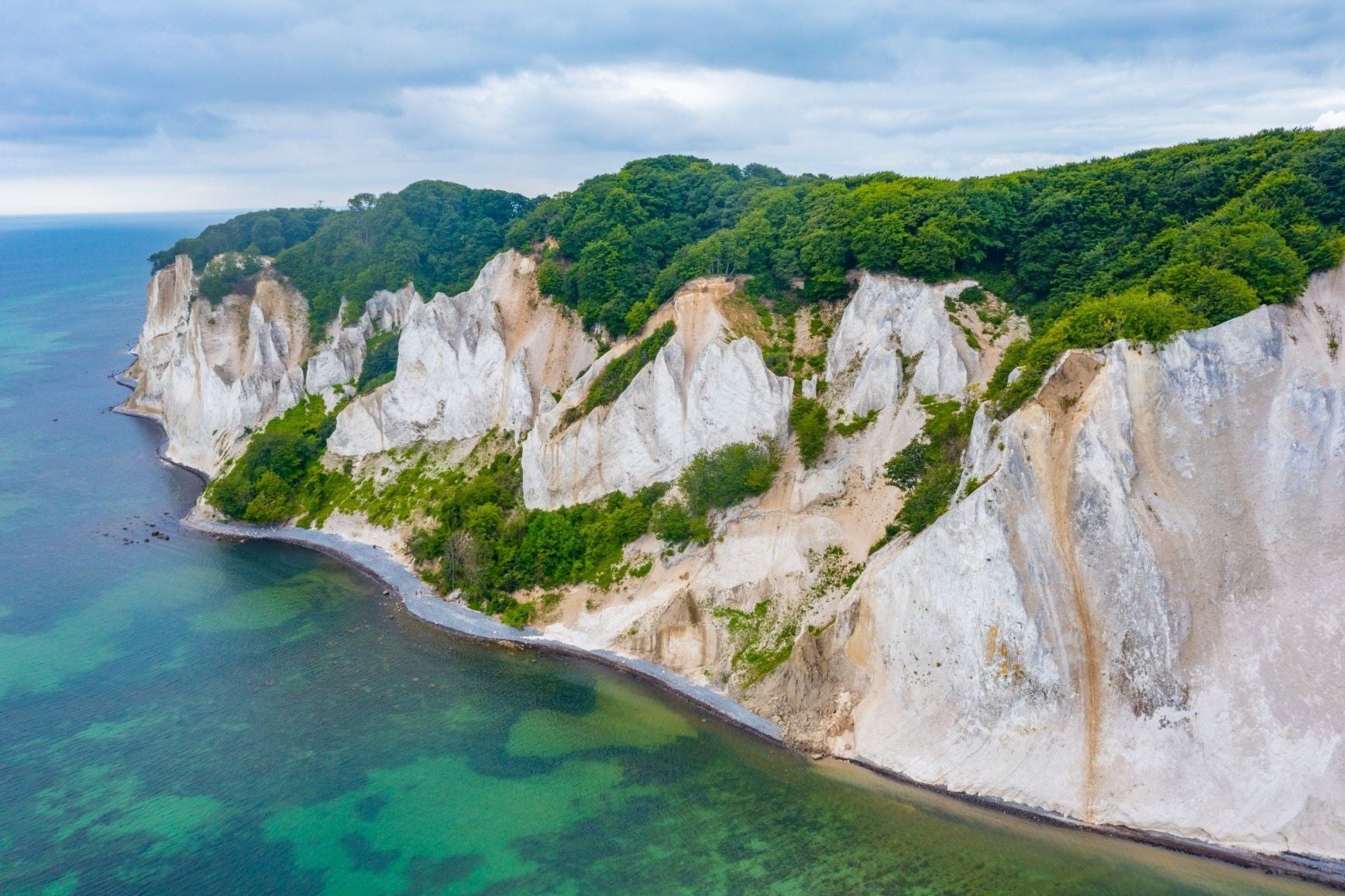
Mons Klint is one of Denmark’s most striking landscapes, and September is an ideal time to explore it. The cooler temperatures and early fall light make the white cliffs stand out even more against the blue sea and forested surroundings. The area stays peaceful this time of year, giving you plenty of room to enjoy the views without summer crowds.
You can follow the edge of the cliffs for dramatic panoramic walks, or descend the long staircase to the beach below and look up at the sheer chalk walls rising overhead.
This part of Denmark is also home to a beautiful stretch of the Camonoen Trail, a well-marked hiking route that runs across the island of Mon. It’s perfect if you want to pair the cliffs with forest paths, open fields, and quiet countryside.
Since Mons Klint is in a remote area, renting a premium car in Denmark makes the journey more flexible and comfortable. You’ll have the freedom to stop at small villages, visit local farms, or take a slow scenic route across South Zealand and Mon without relying on public transport.
Explore the Wild Beauty of Thy National Park in September
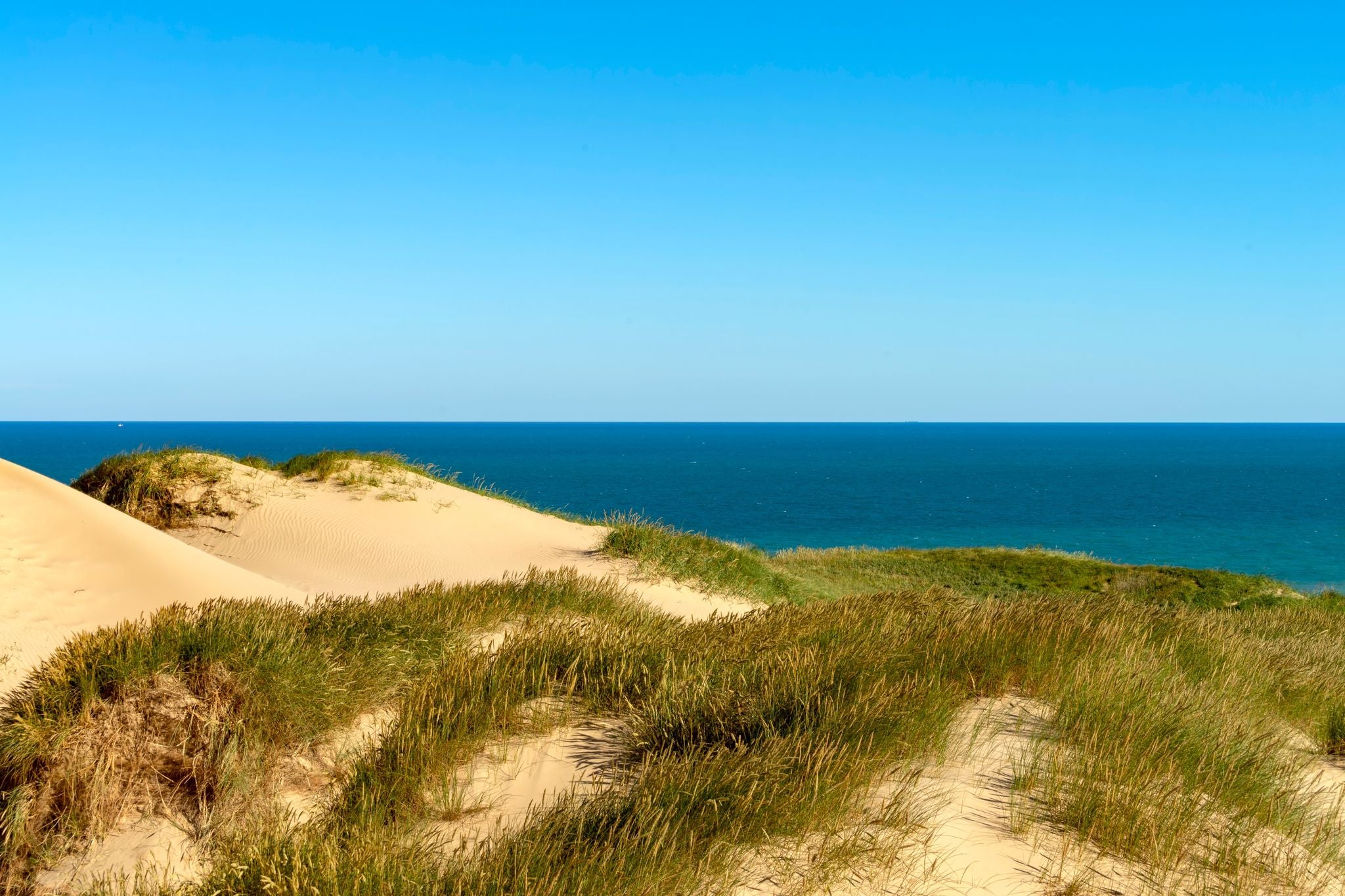
Thy National Park is Denmark’s first national park and one of its most rugged, unspoiled landscapes. In September, the coastal winds soften just enough to make long walks through dunes, heathlands, and pine forests feel refreshing rather than harsh. The early autumn light brings out the earthy tones of the terrain, and you’ll often have the trails nearly to yourself.
It’s an ideal setting for those seeking peaceful nature walks in Denmark. It offers marked paths that pass through wind-sculpted trees, quiet lakes, and wide-open stretches of coastal moorland. Wildlife sightings are common too, and you might spot a deer in the early morning or seabirds along the shores.
This is for travelers who want to unplug and see a wilder side of the country. Bring good shoes, a windbreaker, and enough time to wander without a strict plan.
Witness the Sort Sol (‘Black Sun’) Phenomenon in September
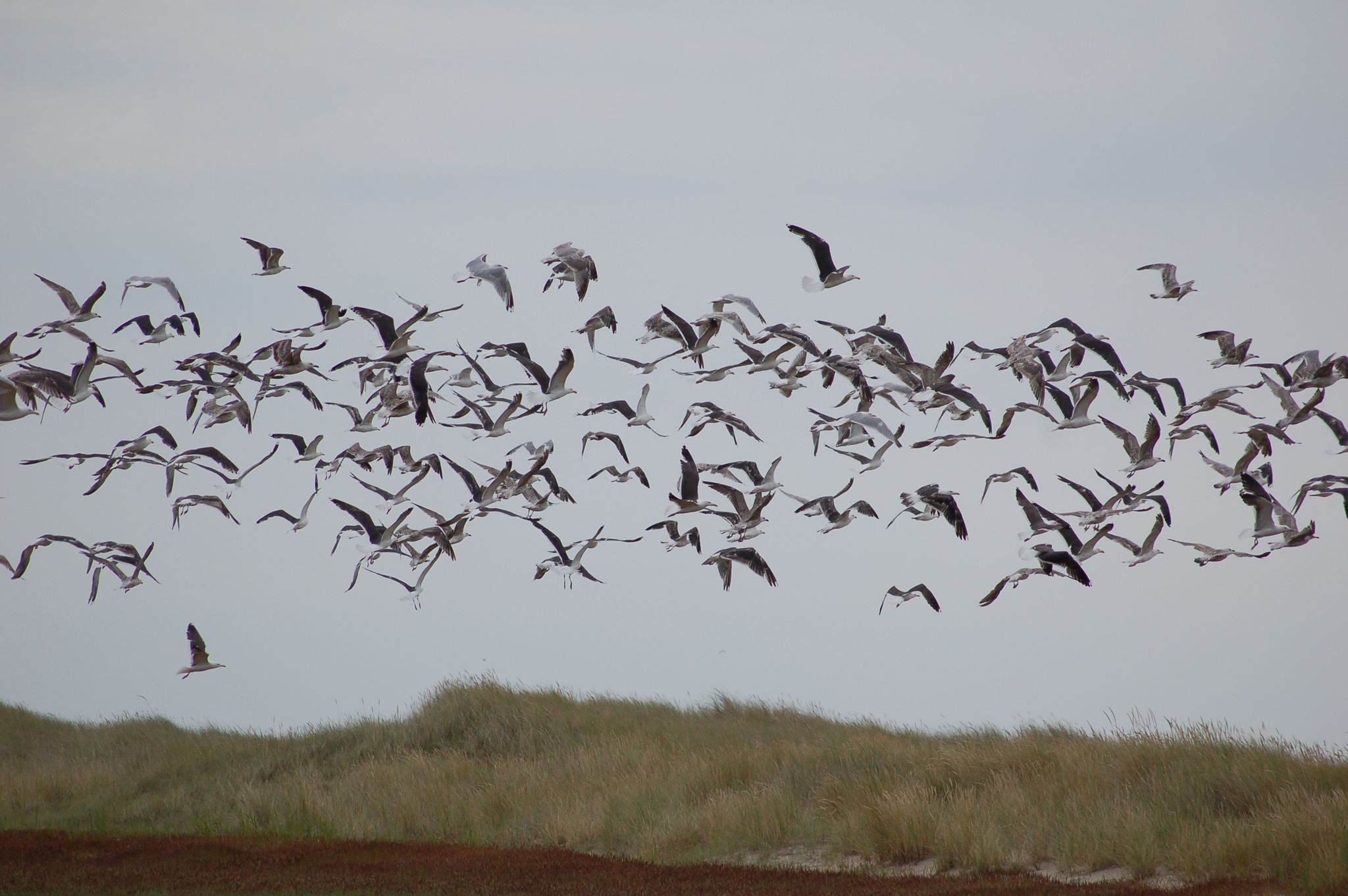
Each September, Denmark’s southwestern marshlands stage a natural spectacle unlike anything else in the country. Known as Sort Sol, or “Black Sun,” the phenomenon occurs when thousands of starlings gather at dusk and swirl across the sky in enormous, shifting patterns before roosting in the reed beds. It’s quiet, eerie, and completely captivating.
The best place to witness it is near the Wadden Sea National Park, especially close to Ribe. The light conditions and bird behavior are most reliable in early autumn, and local guides know the best times and spots to catch the show. Many visitors opt for night tours in Denmark that focus specifically on Sort Sol, as timing and location are key to seeing the full effect.
Even if you’re not a birdwatcher, this is one of those moments that sticks with you. Just bring warm layers, a bit of patience, and a camera if you want to try capturing the sky in motion.
What To Wear in Denmark in September
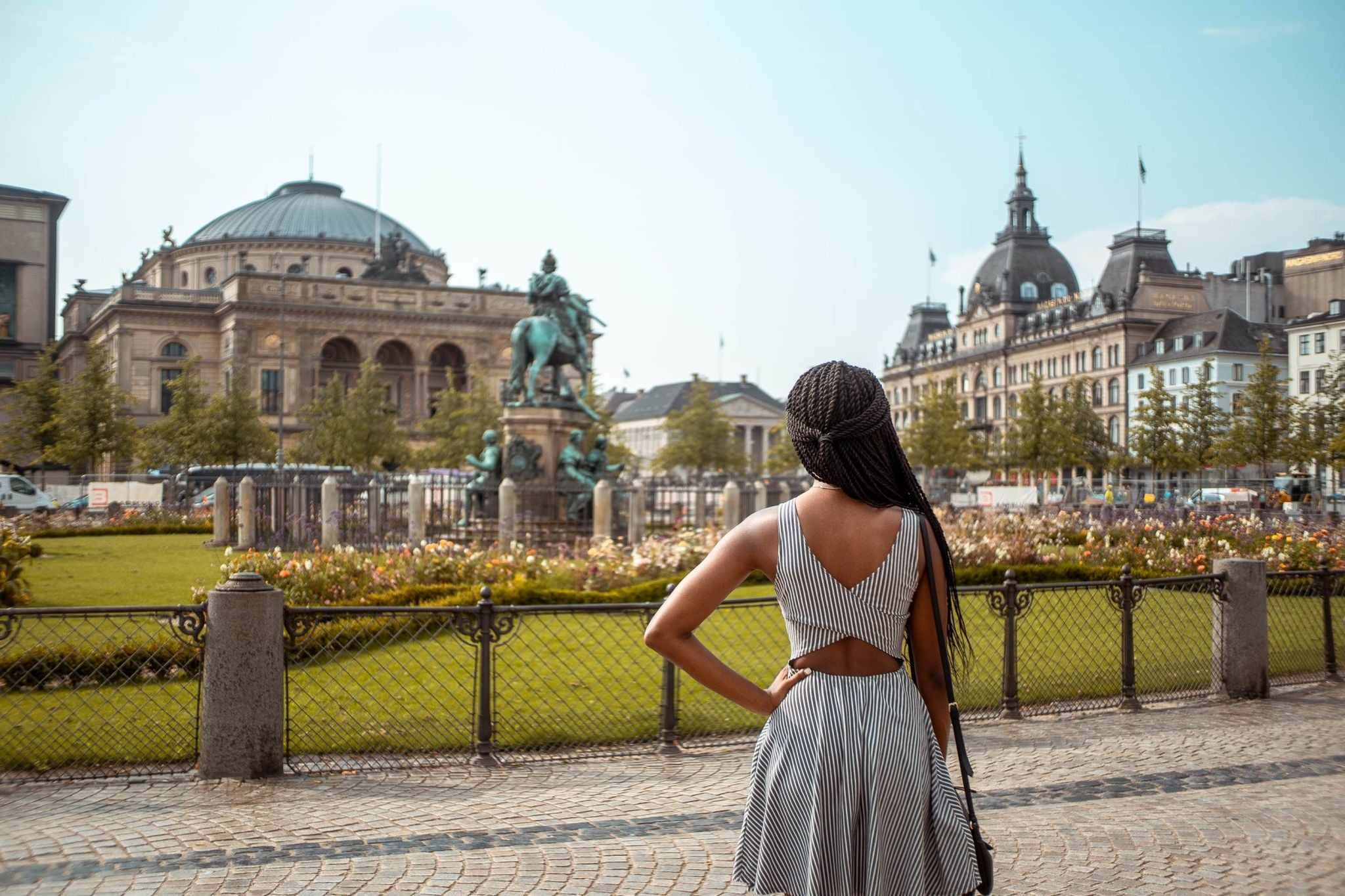
Packing for Denmark in September means preparing for changeable weather. It can shift from crisp mornings to mild afternoons, with a chance of wind or rain just about any day. If you're planning outdoor adventures or city breaks in Denmark, layering is the way to go.
Here’s what to pack for Denmark in September:
Lightweight waterproof jacket: Essential for sudden showers or breezy coastal days.
Comfortable walking shoes: Ideal for cobbled streets, national parks, and city sightseeing.
Layered tops: T-shirts, long sleeves, and a sweater or fleece give you options throughout the day.
Scarf and windproof outer layer: Especially useful if you’re by the sea or exploring open countryside.
Jeans or durable pants: Good for both urban settings and nature walks.
Daypack or crossbody bag: Handy for carrying layers, snacks, or a reusable water bottle.
Small umbrella or rain hat: Showers are often brief, but unpredictable.
Warmer evening layer: It cools down after sunset, even in the cities.
Weather can vary from region to region, so it’s always smart to check the local forecast, especially if your trip includes both coastlines and inland destinations.
Enjoy a Fun Early Fall Trip to Denmark in September

Denmark in September offers a gentle shift into fall, with just the right mix of atmosphere, color, and local life. It’s a time when the weather stays pleasant, the crowds thin out, and the countryside starts to glow. It’s perfect for slow mornings in the city, afternoon bike rides, or cozy evenings by the coast.
Whether you’re browsing harvest markets or catching a seasonal festival, the month brings a quiet richness that’s easy to enjoy.
If you're still shaping your plans, take time to explore more of the top things to do in Denmark, from cultural experiences and outdoor adventures to regional food tours and scenic drives. You’ll find options that suit every pace and interest, whether you’re sticking to the cities or heading off the beaten path.
And if you’re already thinking beyond autumn, our guide to Copenhagen in December offers a look at what the holiday season brings to Denmark’s capital.
FAQs About Traveling To Denmark in September
Is September a good time to visit Denmark?
Yes, September is a great time to visit Denmark. The weather is mild, the crowds are thinner, and there’s still plenty to do. You can explore cities like Copenhagen and Aarhus in comfort, join harvest season activities in the countryside, or enjoy festivals, coastal walks, and bike rides without peak-season rush. Expect a quieter, more relaxed vibe with just enough buzz.
What is the weather like in Denmark in September?
September in Denmark brings mild, changeable weather. Days are generally cool with average highs around 55 F to 63 F (13 C to 17 C), while nights can dip to the low 50s F (10 C to 11 C). Rain is common but often light, and the wind can make coastal areas feel brisk.
Early September still holds onto late-summer warmth, but temperatures gradually drop as the month goes on. Expect a mix of sunshine, clouds, and the occasional shower.
Does it snow in Denmark in September?
No, it doesn’t snow in Denmark in September. The temperatures are still too mild, especially during the day, with daytime highs typically well above freezing. Snow is rare and usually doesn’t occur until late November or December.
Can you see the northern lights in Denmark in September?
It’s possible, but not likely. While the northern lights can occasionally be seen in Denmark, especially in the far north like Skagen, they’re rare and unpredictable. September nights are just starting to get dark enough, but stronger solar activity and very clear skies are needed.
For better chances, you'd need to head much farther north, like Iceland, Norway, or northern Sweden.
Are tourist attractions open in Denmark in September?
Yes, most tourist attractions in Denmark remain open in September. Popular sights, museums, parks, and cultural venues in cities like Copenhagen, Aarhus, and Odense operate on regular hours.
Some seasonal attractions may begin to scale back toward the end of the month, especially in coastal or rural areas. However, September still offers plenty to see and do without the high-season crowds.
Is Denmark crowded in September?
No, Denmark is generally less crowded in September compared to the summer months. Major cities like Copenhagen and Aarhus still have a steady flow of visitors, especially during festivals or weekends, but the overall pace is more relaxed.
That said, popular attractions can still get busy, especially indoors on rainy days. So it’s smart to book entry tickets and passes in Denmark in advance to save time and avoid last-minute queues.
Are prices cheaper in Denmark in September?
Yes, prices in Denmark are often slightly lower in September compared to peak summer months. You’ll find better deals on accommodations, flights, and some tours, especially in the second half of the month. While Denmark isn’t a budget destination, traveling in September can help you avoid high-season rates without missing out on major experiences.
